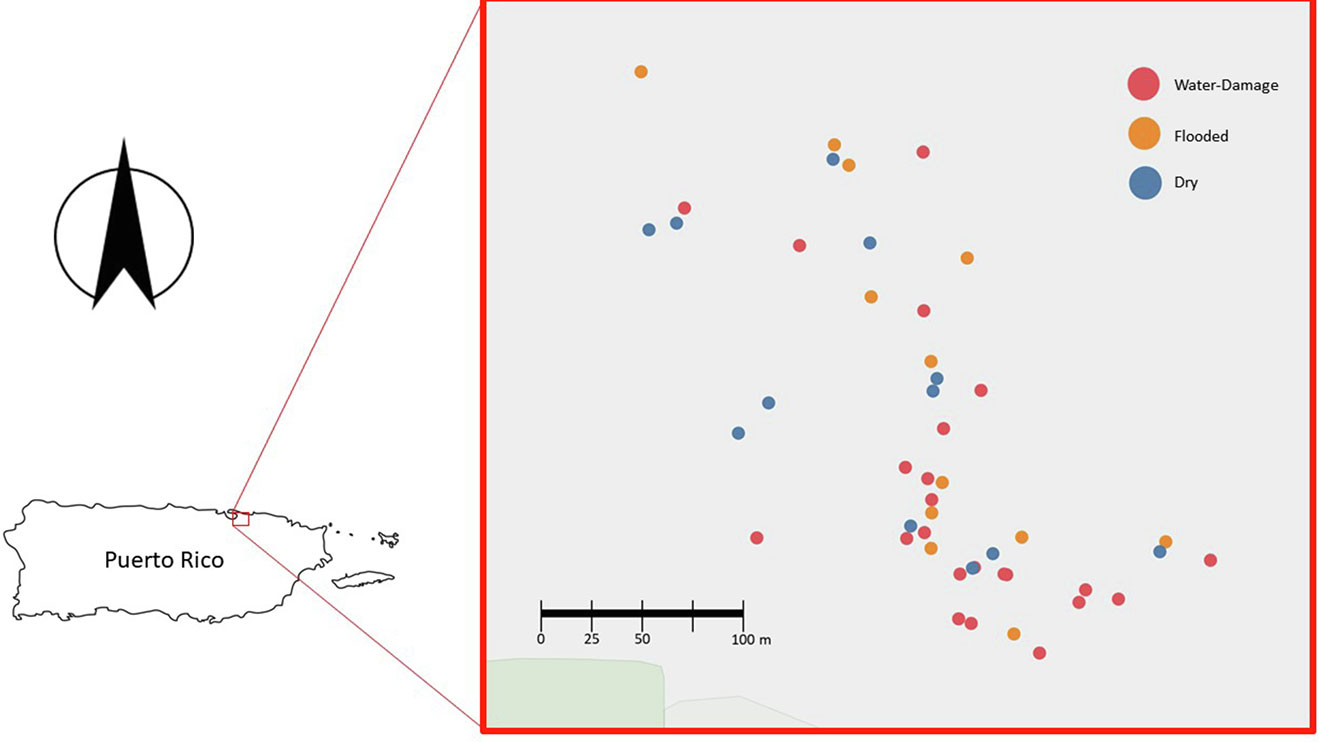

Lorraine N. Vélez-Torres
Department of Microbiology & Medical Zoology
University of Puerto Rico
Medical Sciences Campus
Extensive flooding caused by Hurricane María in Puerto Rico (PR) created favorable conditions for indoor growth of filamentous fungi. These conditions represent a public health concern as contamination by environmental fungi is associated with a higher prevalence of inflammatory respiratory conditions. This work compares culturable fungal spore communities present in homes that sustained water damage after Hurricane María to those present in dry, non-flooded homes. We collected air samples from 50 houses in a neighborhood in San Juan, PR, 12 and 22 months after Hurricane María. Self-reported data was used to classify the homes as flooded, water-damage or dry non-flooded. Fungi abundances, composition and diversity were analyzed by culturing on two media. Our results showed no significant differences in indoor fungal concentrations (CFU/m3) one year after the Hurricane in both culture media studied (MEA and G25N). During the second sampling period fungal levels were 2.7 times higher in previously flooded homes (Median = 758) when compared to dry homes (Median = 283), (p-value < 0.005). Fungal profiles showed enrichment of Aspergillus species inside flooded homes compared to outdoor samples during the first sampling period (FDR-adjusted p-value = 0.05). In contrast, 22 months after the storm, indoor fungal composition consisted primarily of non-sporulated fungi, most likely basidiospores, which are characteristic of the outdoor air in PR. Together, this data highlights that homes that suffered water damage not only have higher indoor proliferation of filamentous fungi, but their indoor fungal populations change over time following the Hurricane. Ultimately, after nearly two years, indoor and outdoor fungal communities converged in this sample of naturally ventilated homes.
Introduction
Fungi are ubiquitous eukaryotic organisms of environmental and medical importance. Exposure to airborne fungi is associated with adverse health effects in humans (Kendrick, 2011; Cannon et al., 2018). Fungi reproduce by spore production, many of which are dispersed in the air. Size of these spores ranges approximately 0.65 µm to >20 µm (Portnoy, Barnes & Kennedy, 2008; Hamilos, 2010; Li et al., 2011; Kwon-Chung & Sugui, 2013; Claub, 2015). Fungal spores and fragments less than 2.5 m can deposit in the alveoli and trigger asthma in sensitized individuals (Joubert et al., 2020). In contrast, large fungal spores and clusters of small fungal spores can deposit in the upper airway triggering allergic rhinitis (Joubert et al., 2020). Environmental fungal contamination, including high airborne fungal spore concentrations in the air, are associated with …






